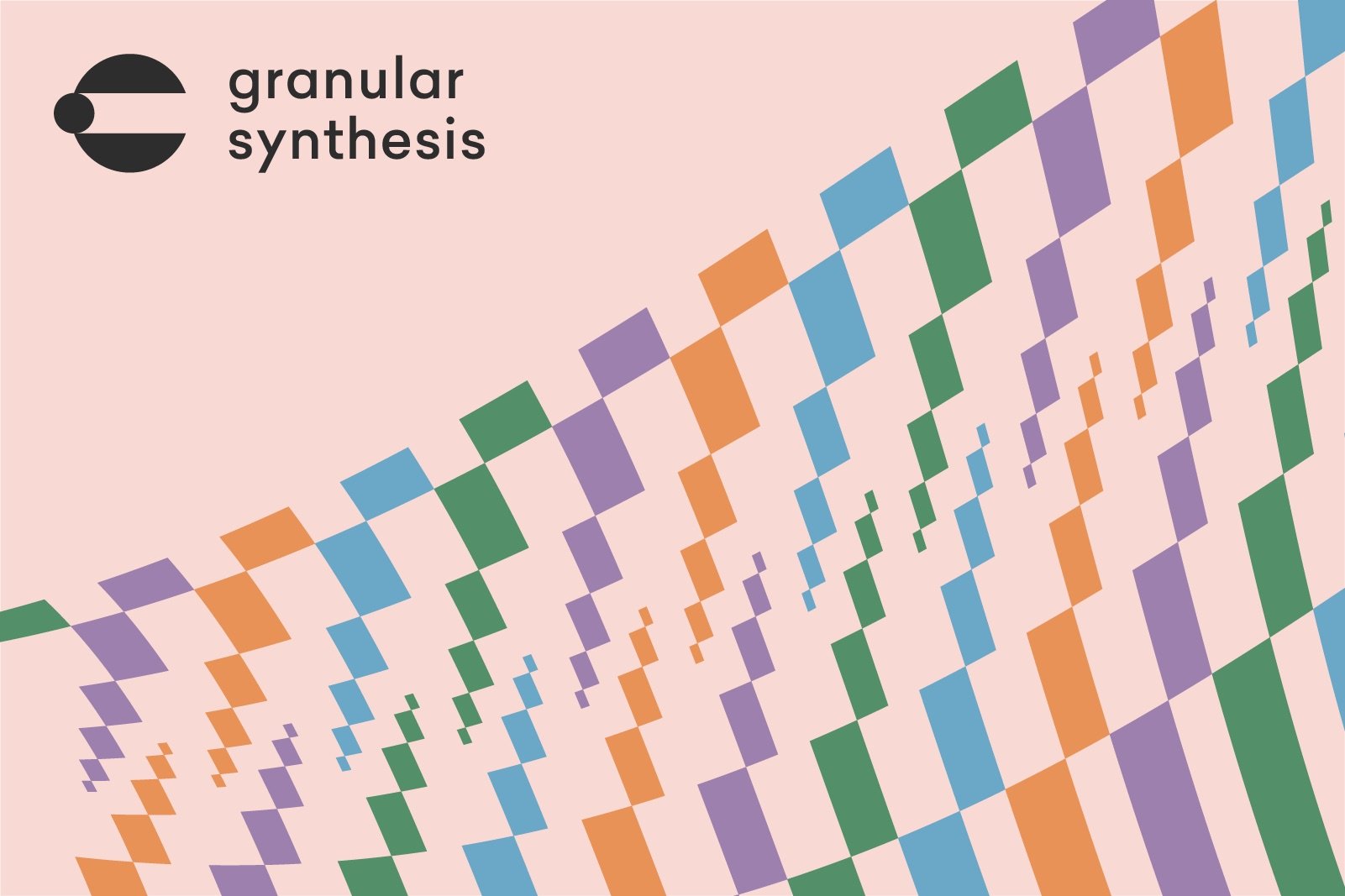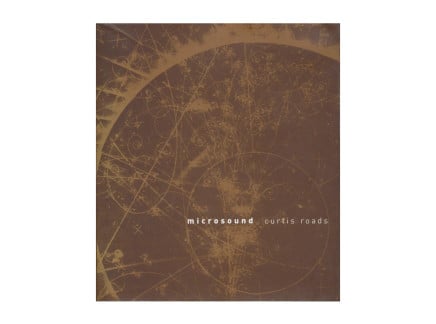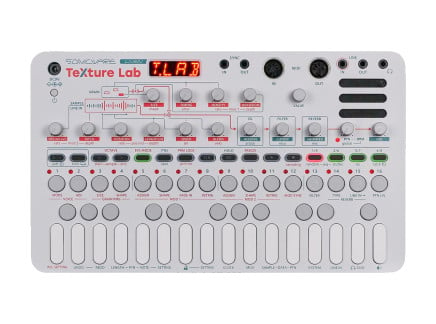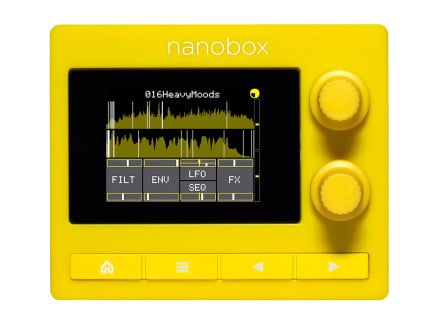The advent of granular synthesis was indirectly anticipated even centuries ago. Yet, only in the last few decades have we crossed the threshold of technological might that has allowed us to fully engage with this riveting sonic realm. The history of granular synthesis is closely interwoven with the evolution of computer music—and as such, it is quite astonishing to realize that the first hardware granular devices emerged so recently. It feels fair to suggest that devices like Mutable Instruments Clouds / Beads, Make Noise Phonogene / Morphagene, Qu-Bit Nebulae, and Tasty Chips GR-1 are in many ways responsible for the current global spread of fascination with granular synthesis. They present an entirely new approach to hardware instrument design—one which still holds much promise or the future.
In this article, we will explore granular synthesis and its various manifestations. After a brief introduction of the general principles of the approach, we will proceed to discuss its origins and variations...and along the way, we'll get to know some of the key figures involved in its development. We will also introduce the special vocabulary that accompanies this particular form of sound synthesis, and provide definitions for common parameters. As you can imagine, there is a lot to cover here. So, let's get started!
It All Begins With A Microsound
Any discussion of granular synthesis would appear incomplete without a mention of the foundational concept of microsound. A microsound, as the name suggests, is a sound with a duration shorter than a musical note, but long enough to be detected by our auditory system. According to experimentally established measurements, this is somewhere between one-tenth and one-hundredth of a second.
We are surrounded by microsounds: waterdrops, the chirp of a lonesome cricket, terse inflections of percussion—you get the idea. While individual microsounds can seem insignificant, a large conglomeration of them can have incredibly dramatic effects. Again, our natural world doesn't have a shortage of examples—the next time you listen to heavy rainfall or hear gravel crackling under your feet, consider that you are in fact experiencing many microsounds interlaced together into a single sonic event.
This observation directs us further to suggest that, in fact, any sound, be it a note on a piano, the sound of a full orchestra, or even a scant waterdrop can be further dissected into a collection of microsounds—each with a specific frequency and location along the imagined "time axis" of that sound. Like the atoms that make up complex matter, you can think of microsounds as building blocks that bond together to form complex sounds. Following this analogy, learning how to manipulate microsounds enables us to synthesize all sorts of sonic material, imaginable or otherwise.
Before we move on, it is also important to introduce some clarity into the semantic diversity that accompanies the subject—that is to say, once you dive into the world of granular synthesis, you will realize that there are a lot of ways of describing similar phenomena. The naming conventions of microsounds are contextualized, and the same phenomena can be presented under a variety of titles. Idiosyncrasies of the language used by different composers and theorists to designate the borders between different sub-methods of granular synthesis have an effect on what microsounds are called in a given situation. As such, terms like acoustic quanta, wavelet, toneburst, pulsaret, impulse, particle, and of course, grain—all represent different facets of the same underlying concept. Furthermore, while the atoms that make up our universe do actually exist, the existence of microsounds is virtual, hypothetical, and abstract...and so often is the language used to described them.
Granular Synthesis
While microsound offers us an expanded perspective on the world of sound, granular synthesis is what allows us to put this concept into practice. Nearly every sample player or synthesizer is easily capable of generating audio that could qualify as a microsound, making such sounds readily available to be used in compositions without involving a specialized granular synth engine. In fact, microsound is also the namesake of an electronic music subgenre that emerged in the late 1990s. Manual arrangement of sound particles along a musical timeline is one way to approach this concept—however, granular synthesis is a much more potent way of interacting with microsounds. It can be said that granular synthesis is a comprehensive framework of ideas, strategies, and technologies that allow us to organize, and manipulate microsounds in large quantities. Typically, a granular-oriented instrument is equipped with a collection of macro-level controls that define the parameters and behavior of masses of sound particles.
Some of the most common parameters in a granular synthesizer include grain size or duration, position, density (how many grains are generated), spread (how close together grains are in time), frequency or speed, spatial location (position or spread), and windowing function or shape (a specific amplitude envelope for each grain that specifies the smoothness or sharpness of its attack and decay). Importantly, while the controls affect each grain individually, the parameters are usually global—yet many instruments often feature additional stochastic features that add variation to each grain (i.e. pitch randomization). Additionally, an important aspect is whether the generation of grains happens synchronously or asynchronously, which practically translates to either steady pulsations and tones or discontinuous rhythmic inflections or noise.
Perhaps one of the most central themes that emerges from granular synthesis is the dissolution of the common belief that rhythm and tone are intrinsically separate phenomena. Granular synthesis aptly demonstrates that any continuous tone can be dissected into a collection of discrete audio events, and that any rhythmic pattern can morph into a steady drone when played at a high enough speed.
This implies a very noticeable distinction between granular and other sound synthesis methods. While most approaches are concerned with manipulating the harmonic content of sound waves, granular synthesis puts an emphasis on our perceptual relationships with sounds. This opens up a plentitude of underexplored avenues for composition and sound design. Tones, rhythms, harmonies, textures, and noise—all appear to be merely different expressions of the same phenomena, where one can seamlessly become the other.
Moreover, it is important to underline another practical benefit of granular synthesis, one that you may very well be benefitting from without even realizing it. The method is at the core of many time-stretching algorithms, allowing you to extend or compress audio without altering its pitch. While the specifics vary, in principle the audio gets chopped into tiny segments which are then repeated and recombined wit each other according to the target duration. Whether used subtly or employed as an extreme effect, timestretching is undoubtedly among the most crucial elements of modern electronic music making.
Origins Of Granular Synthesis
In his seminal work on the subject, Microsound (2001), composer/researcher Curtis Roads traces the origin of the concept back to Antiquity. In particular, it is connected to the ages-old debate on whether the nature of energy signals such as sound and light is wave-like or composed of particles. In the 18th century, the argument reached a heated point, where two famous physicists—Issac Newton and Christian Huygens—expressed divergent opinions regarding the phenomenon of light. One suggested that light can be distilled into a stream of particles, while the other experimentally concluded that the phenomenon clearly demonstrates the behavior of a wave. The resolution arrived at the beginning of the 20th century with the emergence of quantum mechanics, which introduced the concept of a wave function—a complex probabilistic amplitude that describes the characteristics of the particles.
It is important to underline that, for the longest time, the debate was mainly concerned with the light phenomena—while sound, with a few rare exceptions, was generally understood from the perspective of the wave. That said, in 1932 physicist Igor Tamm brought forward the notion of a phonon—an elementary vibrational energy that makes up sound and expresses particle-like behavior. The name phonon, as you may have guessed, draws a direct parallel to a photon (the atomic element of light). The existence of sound particles was also predicted by Albert Einstein in relation to the ultrasonic range.
But perhaps the most imperative influence on the development of granular synthesis stems from the work of physicist (and inventor of holography) Dennis Gabor. In the 1940s, Gabor conducted extensive research on human communication and acoustics. Gabor introduced the term "acoustic quanta," and his research gave birth to two important precursors to the theory of granular synthesis. One of them was the Gabor matrix—an analysis tool that allowed accurate representation of sound in the frequency domain. The other was the granulation machine, which could break sound waves into individual particles, and allowed for altering the duration of the sound without changing its pitch.
While the realm of physics laid out the groundwork for the method, the first musical implementation of granular synthesis can be attributed to the Greek composer, music theorist, and architect Iannis Xenakis. It can be heard in his tape compositions Concret PH (1958), Bohor I (1962), and Persepolis (1971). Xenakis' method was very hands-on and required splicing tapes into tiny fragments, which were then rearranged and recombined using a variety of stochastic approaches. The composer documented his practical findings and philosophy in the text Formalized Music: Thought and Mathematics in Composition, originally published in 1962.
Following the pathway laid out by Xenakis, in the 1970s Curtis Roads began exploring granular synthesis in the digital domain. His work led to the development of groundbreaking software such as Cloudgenerator, Pulsargenerator, and EmissionControl (recently re-issued for OSX). Roads's compositional approach to granular synthesis is well-defined in the album Point, Line, Cloud (2004). And as mentioned earlier, his book Microsound, as well as Computer Music Tutorial (1996) are some of the most comprehensive resources on granular synthesis available today.
Another important contribution to the approach was made by the Canadian composer Barry Truax. In 1986 Truax created a specialized software for Digital Music Systems DMX-1000 signal processing computer, and after a few years of tweaking and modifications, the application allowed real-time granulation of short sounds. The composer's composition Riverrun (1986) captures this period. Later, Truax partnered with a team of engineers to bring the possibilities of real-time granular synthesis forward by developing the Quintessence Box using a Motorola DSP 56001 chip.
From then on, more and more developers, researchers, and composers started implementing granular synthesis, and tools for utilizing the method began to appear in the growing number of audio software and programming environments, including CSound, Supercollider, Max/MSP, etc. These tools still remain among the most flexible and powerful means of implementing the approach, and more and more musical software and hardware manufacturers now offer unique devices specifically dedicated to granular processing. Today, granular synthesizers and granular processors take many forms: effect pedals like the Red Panda Particle 2, standalone devices like the Tasty Chips GR-1, Eurorack modules like the Make Noise Morphagene, and even sound engines within multi-modal synthesizers, such as the Waldorf Quantum.
The Many Facets of Granular Synthesis
From the previous sections, you may have already gathered that there are a number of ways to engage with the world of microsound: from micromontages of magnetic tape to chopping up audio in a piece of software, from premeditated compositions to real-time spontaneous adventures.
However, the list of sub-categories of granular synthesis extends much further. Navigating the diversity of the granular methods may seem complicated, however, it is important to keep in mind that the foundation across all of the approaches largely remains the same, and it is the nuances such as how the sound particles are generated or which extra parameters are added that contribute to the overall complexity. Obviously, the scope of this article doesn't permit us to dive deep into individual variations of granular synthesis, but we will outline the scope it, and if you feel like you would want to learn more about any particular approach, once again the Microsound book is an invaluable resource.
Undoubtedly, the most widespread use of granular synthesis nowadays involves the granulation of sampled sounds. The popularity of this approach makes a lot of sense, as it essentially allows any audio to become the source of granulation, whether it is a pre-recorded piece of music, a live voice, or a classic periodic waveform. Moreover, the technique can be applied through adjourned processing or in real-time, making it a flexible fit for a wide range of occasions.
So what are the other types of granular synthesis? Well, the list is extensive. To name a few, grainlet synthesis combines elements of standard granular and wavelet synthesis; trainlet synthesis implements impulse trains as a primary source of grain generation; glisson synthesis includes an additional parameter of frequency vector for each grai,n allowing for bizarre polyphonic glissandos. Then there are pulsar synthesis, particle-based formant synthesis, granular physical modeling synthesis, granular synthesis via graphic/sonographic interfaces, and more—worlds of possibilities.
Importantly, one has to see that the lines separating different methods are not hard, and it is quite possible to blend and combine different approaches together (in fact, this is one of the ways to establish new approaches). For example, you can generate pulsarets (sound particles in the pulsar synthesis) using standard analog synthesis tools and techniques such as oscillators, filters, and VCAs, and then process them through a general granular synthesis engine in real-time. It is all about experimentation.
Pros and Cons
One thing you shouldn't expect from a granular-style instrument is to get the same tones and character as you would get from other forms of synthesis. This is not to say that granular synthesis is not capable of producing complex timbres—on the contrary, the approach is more than adeqaute for creating unimaginably complex tones. However, it excels in areas that may be impossible with other forms of synthesis. Granular synthesis is exquisitely adept for creating worldly and otherworldly sonic textures, simulating the behavior of physical objects (rainsticks or shakers), and even living creatures (swarms of insects, flocks of birds). Granular synthesis is also great for generating unconventional rhythmic structures, and as we have indicated earlier, freely transitioning between different domains of music.
On the other hand, a possible drawback of the approach is how straining it may be on the the given system. Generating hundreds or thousands of grains is resource-heavy task, and while modern machines are certainly capable of handling granular engines, the toll on the CPU is higher than it is with many other forms of sound generation. This, of course, is not such an issue when you are dealing with dedicated hardware, and gladly the list of such is surely growing.
In any case, granular synthesis is a powerful tool, which has amazing potential for both music and sound design. Thus, it is worth familiarizing oneself with it, as in quite a wide range of situations it's capacity to achieve extraordinary results is unmatched.














